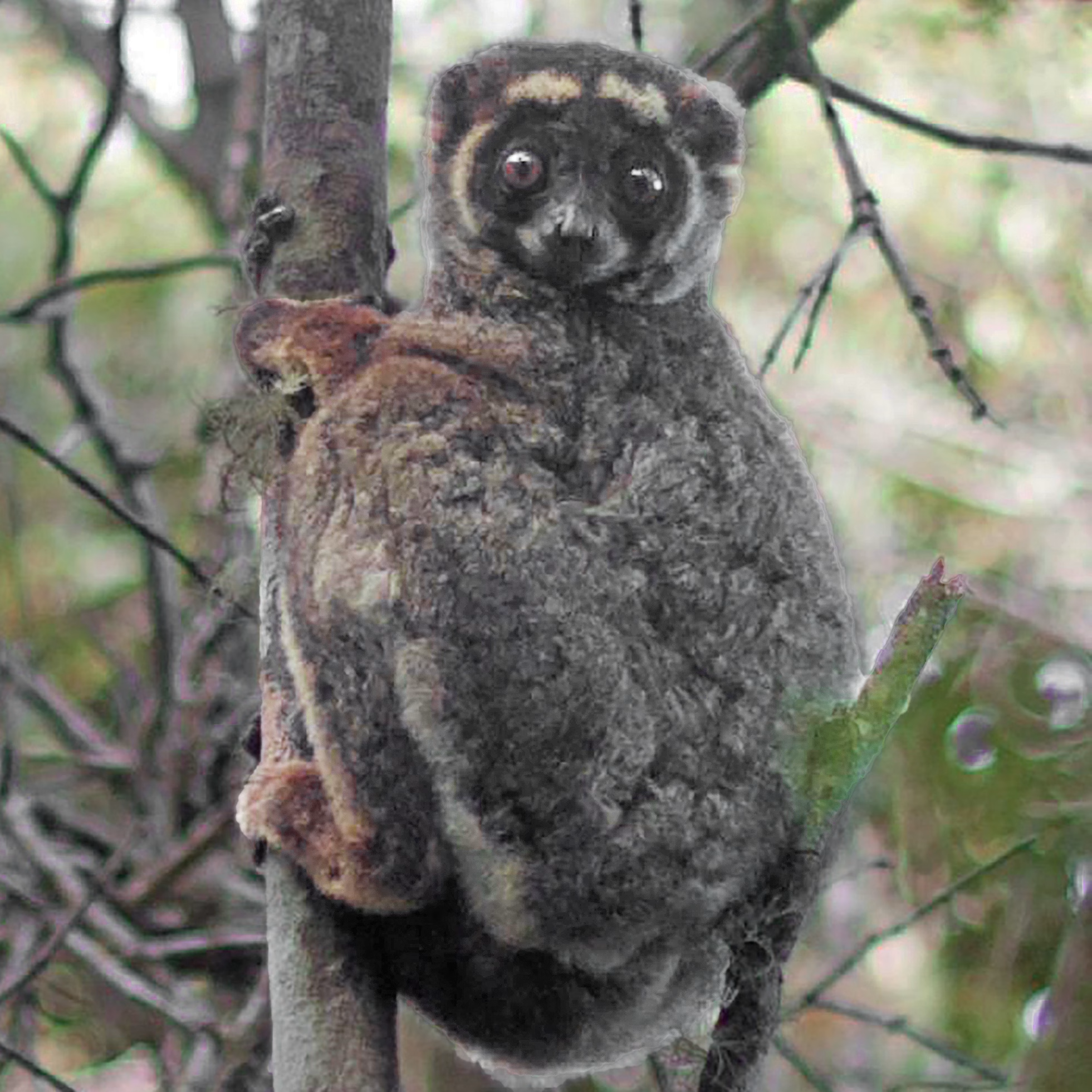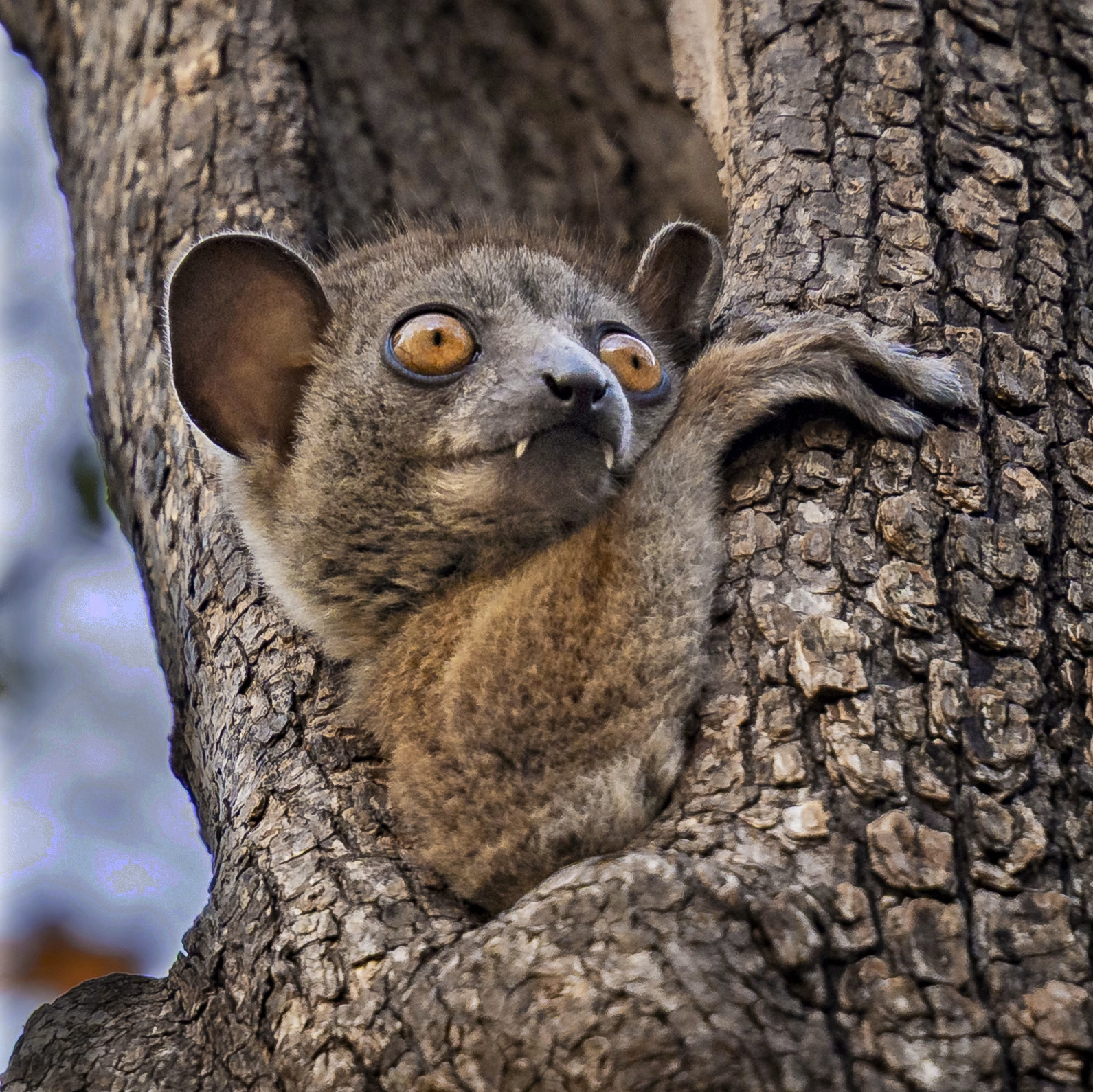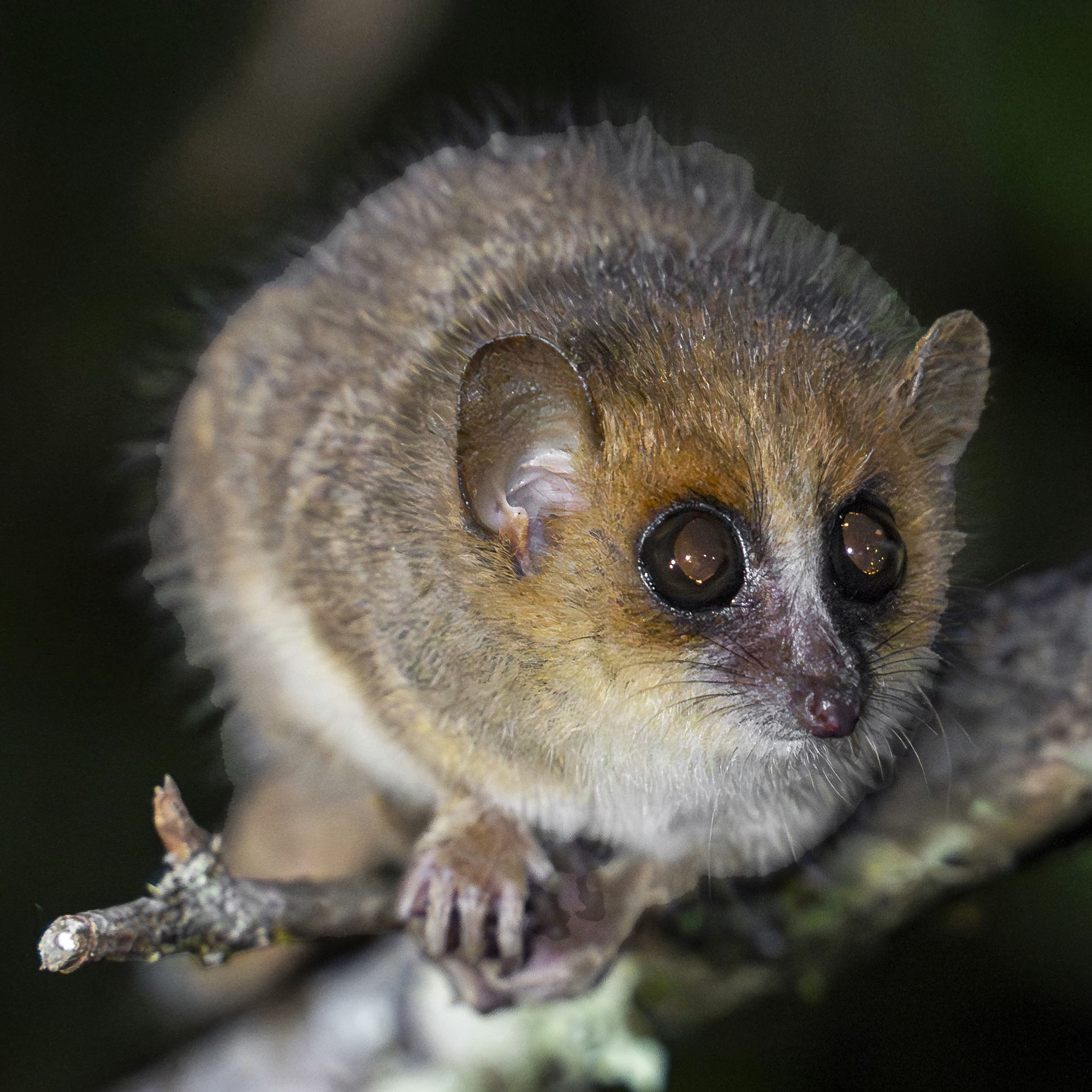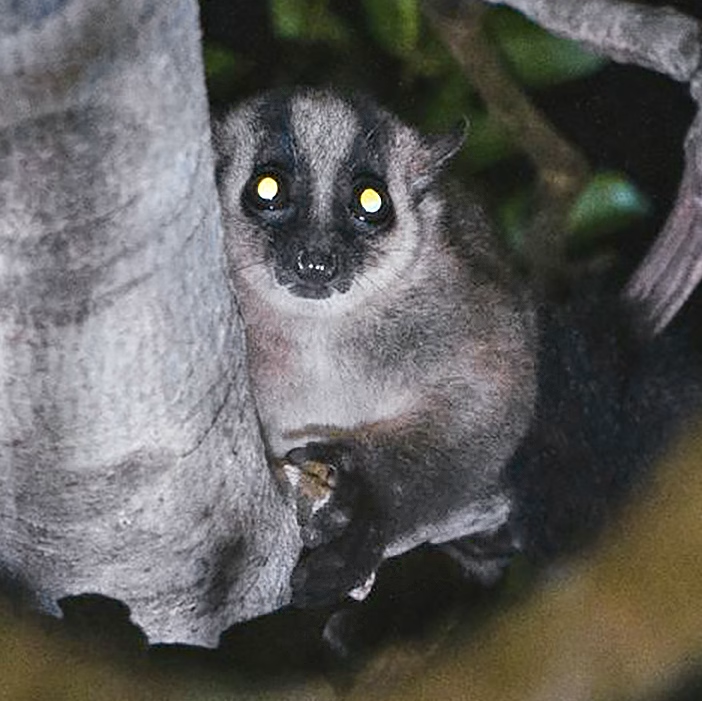
WORLD LEMUR DAY is celebrated on the last Friday of October.
This Year, that means halloween!
What better opportunity to focus on some of Madagascar’s most intriguing species? They come out at night, emerging from the shadows, wide eyes glinting in the gloom…Madagascar’s nocturnal lemurs! Many lemur species are up and at ‘em during the daytime, but some prefer the cover of darkness for their activities. What are they up to after dark—are they spooky or are they kooky? Get to know some of these denizens of the dark. For them, nighttime is the right time!

They Can hear you
In the forest, someone is always listening…. The hairy-eared dwarf lemur is among the masters of the night, perfectly adapted to its nocturnal lifestyle in the forests of Madagascar. With its large, reflective eyes, this lemur can see exceptionally well in the dark, allowing it to spot fruits and insects even under the stars. Its sensitive, furry ears are not just for show—they’re finely tuned to pick up even the faintest rustles, alerting it to potential prey or predators. Another useful adaptation is its ability to enter a state of torpor during the colder months, reducing its metabolic rate and conserving energy when food is scarce. This little lemur even stores fat in its tail, creating a built-in energy reserve for those tough times.
Tap, Tap, Tap, Tap
No, it’s not Poe’s tell-tale heart you hear—it’s the aye-aye! This is one of Madagascar’s most intriguing nocturnal residents, equipped with some unique adaptations that make it a nighttime marvel. With its large eyes that reflect light to make the most of what’s available, the aye-aye can see clearly in the dark, helping it to navigate the forest in search of food. However, what truly sets the aye-aye apart is its extraordinary middle finger—long, thin, and flexible, it uses this specialized digit to tap on trees and listen for the hollow sounds of insect tunnels within. Once it zeroes in on a meal, the aye-aye gnaws through the wood with its powerful teeth and uses that remarkable finger to fish out grubs, much like nature’s own version of a stethoscope and fishing rod combined! Another fantastic feature of the aye-aye is its continuously growing incisors, which are perfect for gnawing through tough tree bark. The aye-aye’s characteristics make it an expert nighttime forager!


Wild and Woolly Night Life
The eastern woolly lemur is adept at seeing its way through the dense forests of Madagascar. With its large, round eyes, this nocturnal lemur can see clearly in low light, helping it navigate in the trees and forage for leaves, its primary diet, in the moonlit canopy. Its woolly fur provides insulation against the cooler night temperatures, keeping it warm. This graceful lemur moves easily through the trees—its strong hind limbs allow it to leap from branch to branch, conserving energy while covering large distances in search of food. It’s also known for using calls to stay in touch with its family group as they glide through the night.
Nocturnal level: Expert
The Tsiombikibo sportive lemur is another nighttime expert. With large, reflective eyes that capture even the faintest glimmers of moonlight, these lemurs navigate the dense forests with precision. Their keen sense of hearing is equally remarkable, allowing them to detect the slightest rustle of leaves, alerting them to both prey and predators. Agile jumpers, they can leap from tree to tree with ease, aided by their strong hind legs and a tail that acts as a balancing tool. Their diet rich is in leaves, which they digest through a unique fermentation process in their extended gut, deriving maximum nutrients from minimal resources.


Hiding in the Shadows
The Goodman’s mouse lemur, one of Madagascar’s tiniest nocturnal creatures, is an example of how size doesn’t limit adaptability. With its big, bright eyes, this little lemur can see exceptionally well in dim light, perfect for spotting insects and fruits, its favorite foods. Despite its small stature, it has keen senses of smell and hearing, allowing it to detect food and avoid predators in the dark. Its nimble fingers and agile limbs help it swiftly navigate through the dense foliage with the grace of a tiny acrobat. To conserve energy during cooler months, the Goodman’s mouse lemur can enter a state of torpor, where its metabolic rate drops, allowing it to survive when food is less abundant. This clever strategy ensures it remains active and ready to forage when conditions improve. It’s amazing how such a small creature can be so adept at surviving nighttime challenges!
under the cover of darkness
The pale fork-marked lemur is perfectly attuned to life in the dark and navigating the night. It has a distinctive forked marking on its forehead, but this lemur is not just about looks—its adaptations are a guide to nocturnal survival. With large, sensitive eyes, it can spot the slightest movements in the moonlit canopy, while its acute hearing picks up the faintest sounds of insects and rustling leaves. Agile and swift, the pale fork-marked lemur uses its long, slender fingers to deftly extract insects from crevices, making the most of the night’s offerings. Its diet mainly consists of gum and insects, providing the energy needed for its nightly escapades.

Discover More about Lemurs
Listen to Podcasts!


In this new 2024 podcast from Jack Baker at Pangolin, Lynne Venart (Director of the Lemur Conservation Network) discusses all of the latest updates in lemur conservation!
Listen on: Spotify | Apple Podcasts | Everywhere else
Pangolin: The Conservation Podcast
Our own Dr. Tim Eppley and Tojo Lytah Razafinahefa talk about lemurs and Madagascar with host Jack Baker on Pangolin: The Conservation Podcast
Visit the Lemur Conservation Network Website
Find out all about the purpose and history of World Lemur Day from the Lemur Conservation Network, and see how you can participate! There are activities, games, and crafts for kids, and lots of information for everyone to share with families and friends. Check out the fun!

